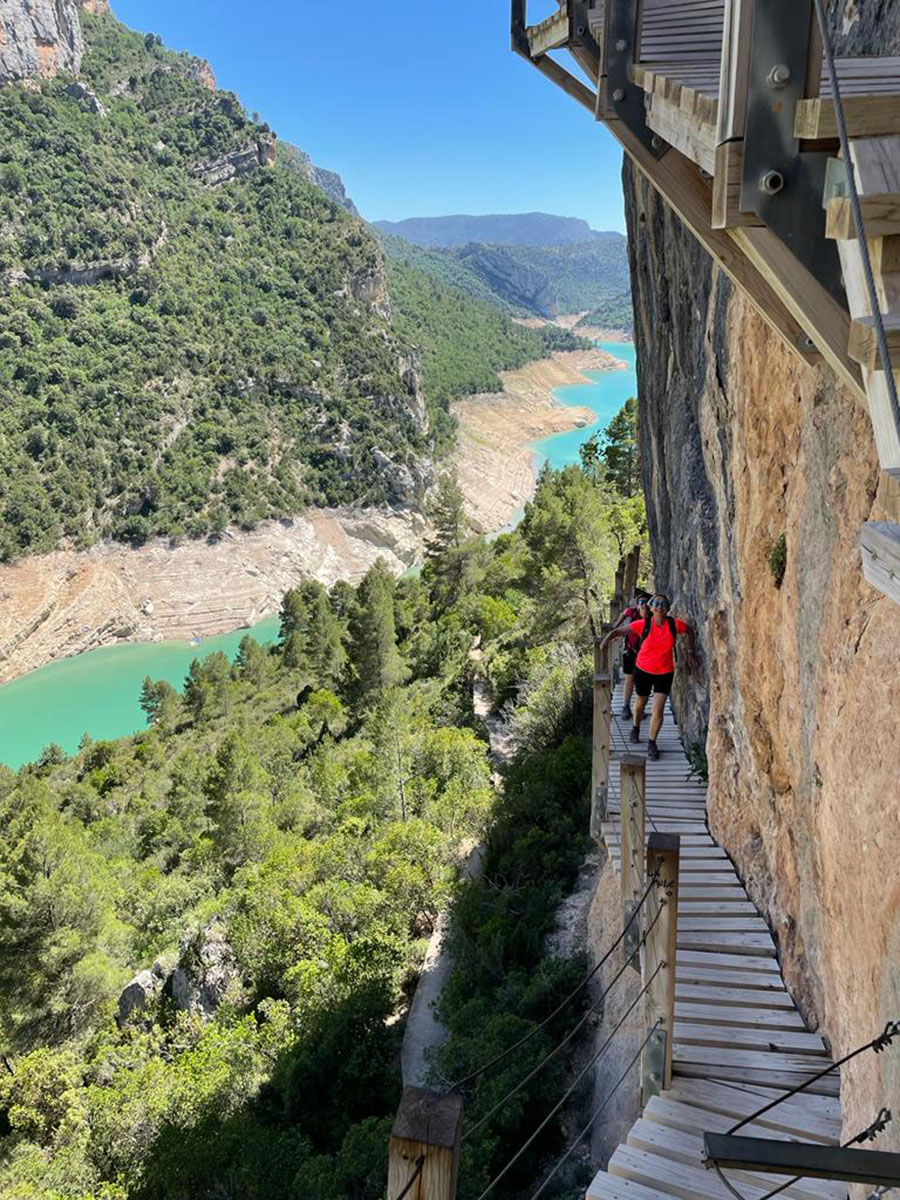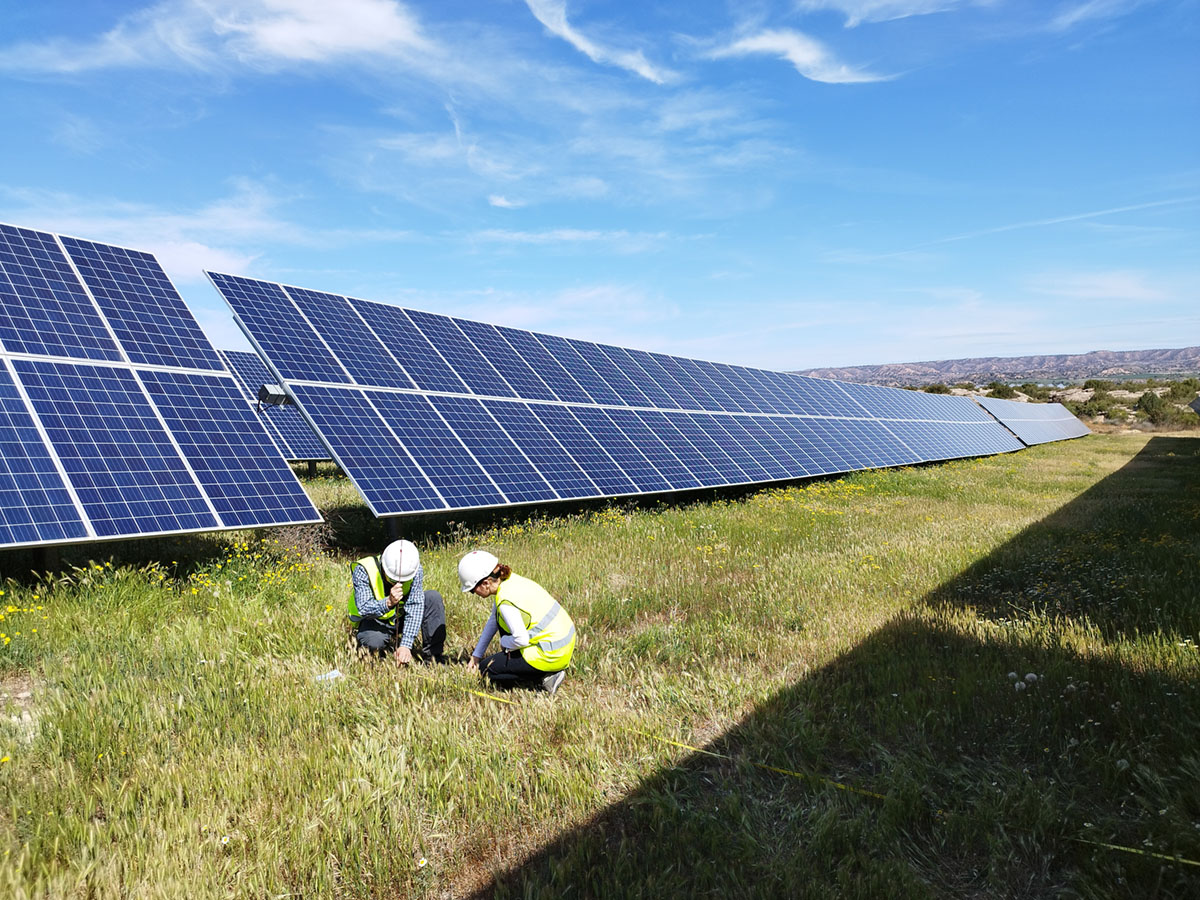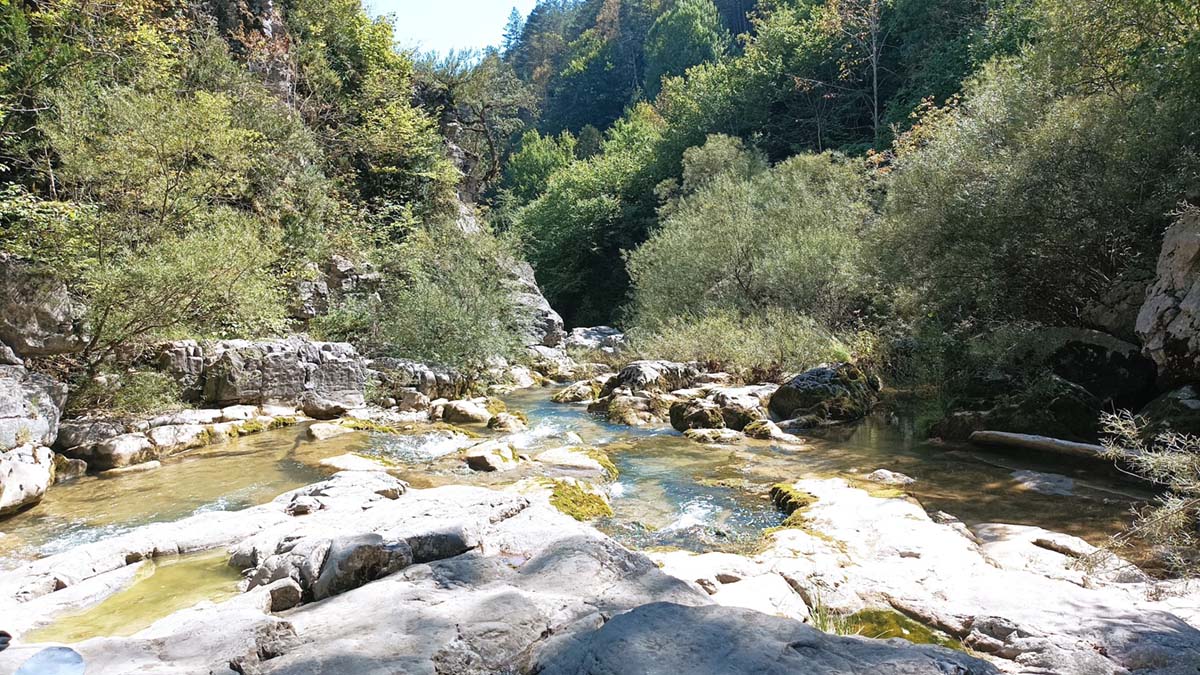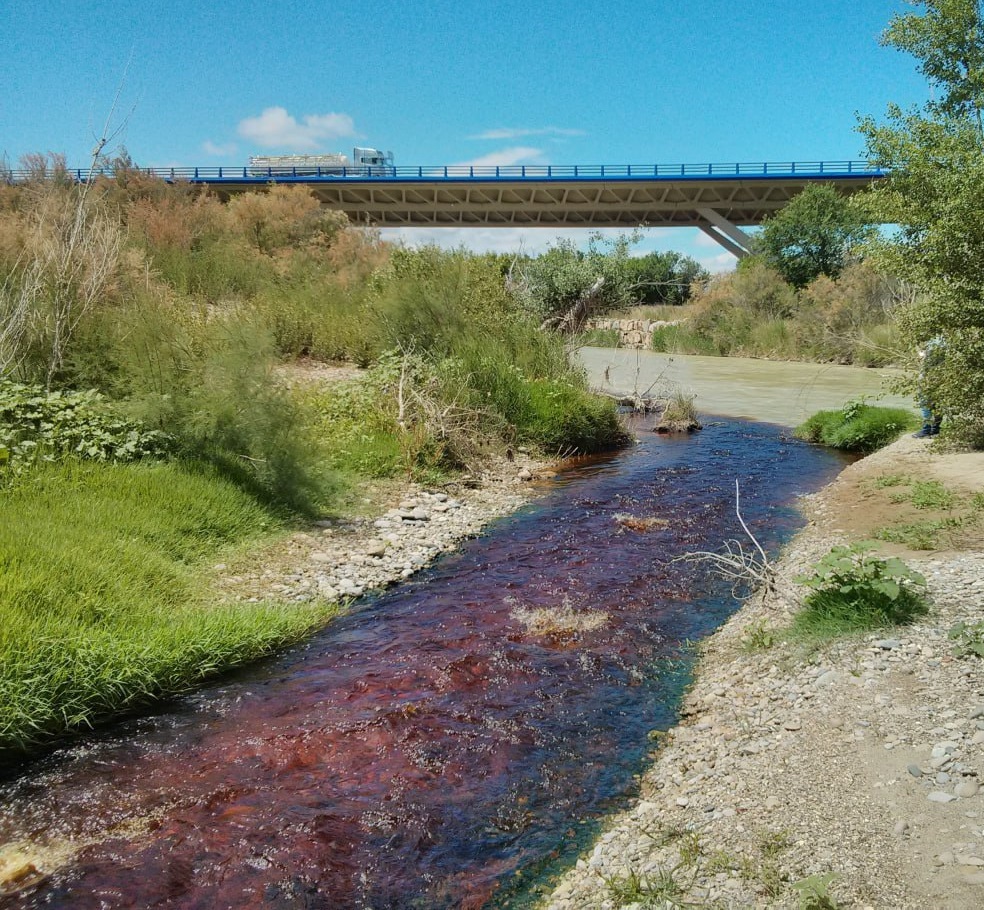Lines of research
Ecosystem restoration
We evaluate the evolution of restoration projects by investigating the ecological functioning of restored ecosystems, especially in riparian ecosystems, open-pit mining and forest systems, developing new restoration techniques and methods for companies and public administrations.
We also study the adaptation to drought of forest and plants of interest for restoration through changes in the hydraulic properties (imbibition) of their seeds. In addition, we carry out perception surveys to different interest groups to analyze changes and identify aspects that can be improved in the social acceptance of restoration projects.

LIFE Ribermine
Recovery of river habitats through mine restoration. We are restoring the Santa Engracia kaolin quarry within the Upper Tajo Natural Park (Guadalajara). The primary objective is to mitigate sediment emissions into aquatic ecosystems. We are in charge of revegetation, applying a novel method of seed bank transfer, with the aim of creating a pine-oak forest. Project website.
BES-ROSA
Project Optimization of seed selection for mine restoration. We use biodiversity as a tool to improve the restoration of abandoned open-pit mines from combinations of seed mixtures of up to 12 different species with different characteristics.
Rural abandonment and associated land-use changes

In RESTECOL we investigate the relationship between the population loss in rural areas and changes in provisioning and regulating ecosystem services, as well as the reverse effect, that is, the effect of restoration of abandoned rural cores on provisioning, regulating and supporting cultural services, biodiversity and biotic interactions.
In addition, we investigate the serious problem of pasture recession in the Pyrenees and the restoration of degraded soils due to rural abandonment, and the process of renaturalization in Aragonese municipalities along an aridity gradient.
RENURSE
Effect of the Restoration of Abandoned Rural villages on Ecosystem Services: towards a sustainable ecological transition of the rural environment. The project analyzes the effects of the restoration of abandoned villages on biodiversity and ecosystems in three rural mountain areas of Huesca, Navarra and Guadalajara. Project website here.
ARBIO
Study of the effects of Rural Abandonment on multitrophic BIOdiversity and ecological processes in Mediterranean ecosystems. We work in 40 municipalities of Aragon in which the abandonment of agricultural practices and renaturalization processes in depopulated municipalities are evaluated. The same study area of this project addresses the ARREA project: Effect of ARidity on the Renaturalization of Rural Ecosystems after their abandonment. More information on the ARBIO project here.
Clearing of pastures in the Pyrenees. Rural Development Plan (PDR, in Spanish)
The decline in grazing activity has led to the encroachment of forests and shrubland. In response, we are engaged in clearing operations and assess the impacts one carbon storaged and the production of blue water (water that flows through rivers and aquifers). We develop management plans in order to calculate the optimallivestock load required to ensure the maintenance and usefulness of the pastures over time. These initiatives are currently under way in the area around Yésero and the Bujaruelo valley, in Huesca.
Valuation of environmental assets and ecosystem services
Within the RESTECOL Group, a cross-disciplinary focus lies in the assessment of environmental goods and ecosystem services. This involves the evaluation of any changes in the use of ecosystems -soils, landscapes, rivers, wetlands, mountains, etc.-, or an environmental asset.
Our research within this domain is twofold: applied and methodological, oriented to provide the most appropriate tools and methods for valuing environmental services and assets.
In coordination with professionals from other disciplines such as biologists, ecologists, geologists, geographers or physicists, we have participated in projects as diverse as the restoration of wetlands, valuation of ecosystem services associated with river management during low water levels or studying the consequences of the deployment of renewable energies, among others.

Renewable energies

The objective is the environmental and social evaluation of the implementation of renewable energy parks, as well as to propose restoration and naturalization actions.
Proyecto with GALP
We work in one of the largest photovoltaic plants in Europe of the energy company, of about 3,000 m2, located in the province of Zaragoza between the municipalities of Chiprana, Escatrón and Samper. We study the flora and fauna inside the plots of the photovoltaic plant, both under the plates and in the outdoor areas, in order to understand the functioning of these new ecosystems and recover their functionality.
DERPERACER
Deployment of Renewable Energies: Perception and assessment of costs, risks and benefits that influence the acceptance or rejection of new generation plants. We investigate renewable energy deployment projects in different Spanish autonomous communities, some approved and others rejected due to opposition from the local population. We study how the costs, risks and benefits that influence their acceptance or rejection are perceived and valued. For this purpose, we conducted general population surveys, workshops, focus groups as well as personal interviews with local groups. More information on the project.
Invasive alien species
These are plants and animals introduced accidentally or deliberately by human activities and that have negative impacts on biodiversity or socio-economic interests. Some representative examples are the zebra mussel, the Asian hornet or the water hyacinth. At RESTECOL we support the prevention and early detection of invasive alien species with the greatest impact and develop ecological management and restoration strategies based on the best available scientific evidence. We conduct field monitoring campaigns, impact assessment experiments and simulations of potential expansion under climate change scenarios.
InvasiBES Project
Impact of biological invasions on biodiversity and ecosystem services. Information about the project here.
LIFE-SIP PYRENEES4CLIMA Project
Towards a climate-resilient transboundary mountain community in the Pyrenees. We anticipate invasive alien species that may affect the Pyrenees in the future under climate change scenarios.

Mountain sports activities

We investigate the impact of water sports on the ecological and conservation status of Mediterranean mountain rivers of the protected natural areas of the Pyrenees and pre-Pyrenees. In addition, we generate vulnerability indicators and scientific guidelines for their management in a context of depopulation.
Since 2017, numerous samplings have been carried out in the Natural Park of Sierra and Canyons of Guara (Huesca) and in the National Park of Ordesa and Monte Perdido (Huesca), where we compare the ecological status of canyon sections where canyoning activities are developed with sections where these activities are not permitted.
Environmental toxicology
We assess the impact that waste – emissions, discharges and solid waste – have on ecosystem functioning and human health under a ‘one – health’ approach, a holistic multisectoral approach that recognizes that human health, animal health and the environment are interconnected. Diseases are transmitted from humans to animals and viceversa and therefore need to be addressed in a holistic manner.
We investigate the use of different tools, such as bioremediation, to seek sustainable solutions to the challenges posed by the presence of different pollutants in soils, rivers and air in our environment, work that is extremely useful for decision making by the competent authorities in environmental health. Previous projects include soil contaminated by lindane, urban air pollution or water quality in rivers and springs.
EU-JAMRAI
Antibiotics revolutionized our society by treating once deadly diseases, but now the challenge is to limit their overuse and misuse, as combined resistance to multiple antibiotics could become the world’s biggest killer by 2050. This challenge requires a coordinated global response as antimicrobial resistance does not recognize geographical boundaries. More information on the project.

Socio-ecological interactions

We investigate the consequences of the interactions between humans and ecosystems, as well as their diverse implications for sustainability, mainly in the flows of ecosystem services and in the equity of access to these services by different social groups.
NADESUD
Influence of natural and anthropic factors on the provision and
distribution of ecosystem services in Mediterranean agroecosystems. We analyze the different ways by which anthropogenic and natural capital are combined to sustainably co-produce ecosystem services and contribute to the equitable distribution of these services in pre-Pyrenean agroecosystems (Huesca and Navarra) and the Iberian mountain range (Guadalajara and Zaragoza).
VANATE
VAlues of NAture and TElecoupling. We unravel the relationship between the values attributed to nature and the ecosystem management model (circular or tele-coupled economy) by continuing the ESUDIS line in the German areas of Schwäbische Alb, Hainich-Dün and the Schorfheide-Chorin. Project website.
INTERCEDE
Interactions of Farmland Biodiversity and Agricultural Ecosystem Services under Climate Change. We study how landscape composition affects wild pollinators, and how it changes in a more heterogeneous or more homogeneous landscape gradient in agricultural settings in Saxony-Anhalt. More information.
Pennycress as an alternative crop for sustainable oil production
We evaluate the potential of the plant species Pennycress (Thlaspi arvense) as an alternative crop for the sustainable production of oil for industrial and bioenergy uses. It is a plant of Eurasian origin with different populations identified in Aragon. Research is focused on finding ways to domesticate it and achieve an environmentally and economically sustainable crop.
PennyAragon Project
Evaluation of the suitability of native varieties of Pennycress (Thlaspi arvense) as a sustainable crop alternative for agriculture in arid drylands of Aragon (Government of Aragon, Rural Development Program-PDR). Project website.

Project
“Validation of the suitability of Pennycress oil (Thlaspi arvense L.) for the sustainable production of high quality biojet with high energy value”. (Government of Aragon, Priority and Multidisciplinary Lines).
PENNYOIL Project
“Molecular and biochemical characterization of oil and fatty acid biosynthesis in model organisms and in Pennycress, an emerging crop with bioenergy applications”. (MICINN, Knowledge Generation).
